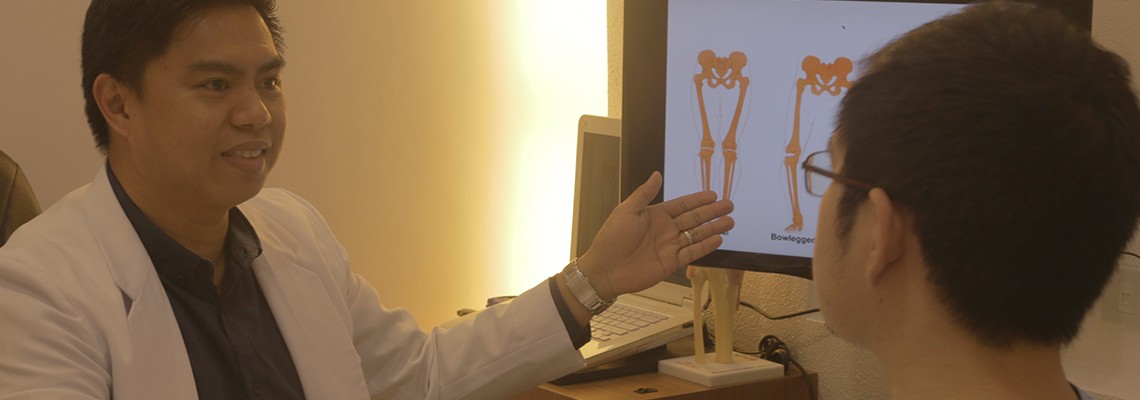
Joint Replacement Surgery Service
St. Luke’s Joint Replacement Surgery Service is the only center in the country that caters primarily to joint replacement surgical cases involving the hip, knee, shoulder and joints. It is a subsidiary unit of the Institute of Orthopedics and Sports Medicine which promotes the art and science of Joint Replacement Surgery, known in the field of orthopedics as “Arthroplasty”.
The unit utilizes state-of-the-art mechanized systems, like power tools and intraoperative imaging modalities, which result in high success rates and long-term favorable results with few or no complications.
Vital joint
The hip joint is one of the most stressed joints in our body. We use it constantly in everyday movements such as walking, sitting, turning or even driving a car. As long as our hip joint is healthy, we tend to take its importance in daily living for granted. Only when our hip joint starts to be stiff or to cause pain do we realize how much we really rely on this vital joint. Arthritic conditions, fractures, and aseptic necrosis (a condition in which the head of the thigh bone dies) can damage the hip joint and result in severe pain and restricted movement.
Replacing a diseased hip joint
Fortunately, a diseased hip can now be replaced with an artificial joint which relieves stiffness and pain, as well as allows normal movement to once again become possible.
Total hip replacement is a surgical procedure for replacing the hip joint.The hip joint is a ball-and-socket joint where the ball or head of the femur (thigh bone) joins the pelvis at the socket called the acetabulum. During the surgical procedure, these two parts of the hip joint are removed and replaced with smooth artificial surfaces.
Most patients who have artificial hips are over 55 years of age, but the operation is occasionally performed on younger persons for specific conditions. Circumstances vary, but generally patients are considered for total hip replacement if:
-
pain is severe enough to restrict not only work and recreation, but also the ordinary activities of daily living
-
pain is not relieved by conservative treatment like pain medicine, the use of a cane, and restricting activities
-
there is significant stiffness of the hip
-
X-rays show advanced arthritis or other problems
A total hip replacement will provide complete or nearly complete pain relief in 90 to 95 percent of patients. It will allow patients to carry out many normal activities of daily living. The artificial hip may allow you to return to active sports or heavy labor under your physician's instructions. Most patients with stiff hips before surgery will regain near-normal motion, and nearly all have improved function.
The Anterior Approach for Total Hip Replacement
The hip is an anterior joint, closer to the skin anteriorly than posteriorly. The Anterior Approach for Total Hip Replacement follows the anatomic interval between the zones of innervation of the superior and inferior gluteal nerves lateral and the femoral nerve medial. Also, the approach exposes the hip without detachment of muscle from the bone.
A state of the art fracture table called Hana optimizes the Anterior Approach to Total Hip Arthroplasty (AATHA) and St. Luke’s Medical Center is the only hospital in the Philippines that is equipped with it. Its unique patient positioning capabilities enable the surgeon to replace the hip through a single incision, Anterior Approach without detachment of muscle from the pelvis or femur.
Knee Replacement Surgery
When a knee is so severely damaged by disease or injury, an artificial knee replacement may be considered.The most common condition that results in the need for knee replacement surgery is osteoarthritis. This is a degenerative, joint disease that affects mostly middle-aged and older adults.
During knee replacement surgery, joint surfaces are substituted or replaced by prostheses. After the damaged bone and cartilage of the knee is removed, the orthopedic surgeon will place the new artificial knee in its place.
Knee replacement surgeries usually require an in-hospital stay of several days. Even while in the hospital, the patient usually begins physical therapy exercises to begin regaining range of motion in the knee. Physical therapy will continue at home. Pain medicine also will be given to keep the patient comfortable.
Shoulder Replacement Surgery
The top end of your upper arm bone is shaped like a ball. Muscles and ligaments hold this ball against a cup-shaped part of the shoulder bone. In Shoulder Replacement Surgery, doctors replace the ends of the damaged upper arm bone (humerus) and usually the shoulder bone (scapula) or cap them with artificial surfaces lined with plastic or metal and plastic. Shoulder joint components may be held in place with cement. Or they may be made with material that allows new bone to grow into the joint component over time to hold it in place without cement.
A physical therapist may begin gentle exercises of your shoulder on the day of surgery or the day after. These exercises are just passive motion, which means you relax and let the therapist move your arm for you. Most people who have shoulder replacement surgery are able to sit up and get out of bed with some help later on the day of surgery.


